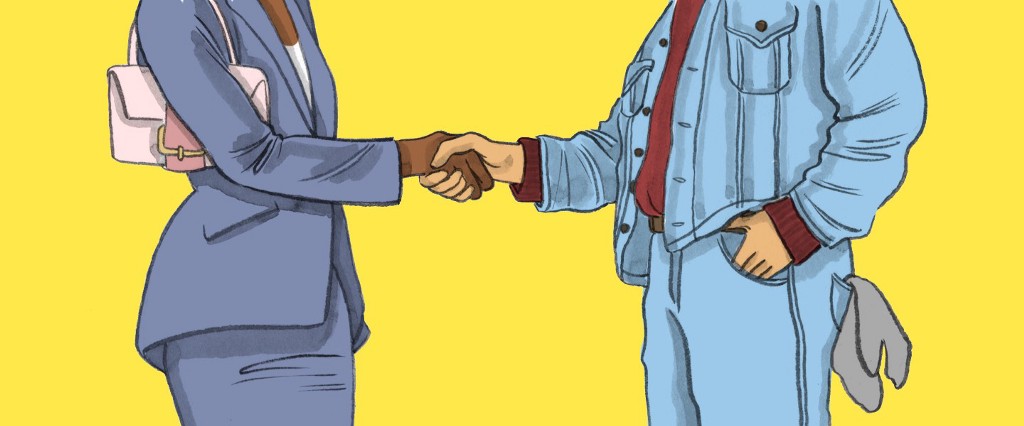A cursory glance at this year’s election map would seem to reveal crimson flyover country flanked on either side by blue-hued coasts. But a county-level examination reveals we’re not so much a country of red and blue states as we are one of densely populated liberal epicenters surrounded by large swaths of sparsely-inhabited conservatism — specks of blue splashed on a sprawling red canvas.
Hillary Clinton won just 15 percent of the land area of the U.S., but she leads Donald Trump by more than 2 million popular votes.
Our current political divide is largely defined by geography — between urban liberalism and rural conservatism — and it’s likely only going to get more pronounced in coming years as economic and educational forces drive us further apart, according to urban design experts.
3. This clustering is built into the deep structures of our economy. Thus the new urban crisis is the new American crisis.
— Richard Florida (@Richard_Florida) November 10, 2016
It’s not clear why liberals tend to concentrate in urban areas. Are liberal-minded people naturally drawn to cities, or does living in a city make one a liberal?
“The simple answer is we don’t actually know,” says Harvard professor of political science Ryan Enos. Some urbanists believe cities are liberal by design; cities force interactions between people from a multitude of ethnic, racial, religious and ideological backgrounds, thus fostering the ideals of tolerance and acceptance that liberals hold so dear.
The only way to tease out that causal relationship would be to conduct a massive social experiment in which you track the political leanings and migratory patterns of a statistically significant number of Americans over the course of decades, which would be a colossal undertaking, Enos says
One thing is for certain, though: This concentration of liberals in cities is due to the continued rise of a “knowledge economy” dominated by urban-dwelling college graduates, Enos says, and a corresponding shift away from an industrial society once dominated by the rural voters who constitute Trump’s base.
The knowledge economy, as it’s called, prioritizes the exchange of information over the production of physical goods, and values jobs in industries such as technology, health care, finance and academics. “Those jobs are increasingly driving the U.S. economy, and they tend to be more clustered in urban centers than manufacturing ever was,” Enos says.
Knowledge economy jobs almost universally require a college degree, which would explain why college-educated citizens are leaving struggling rural areas to live in cities. In fact, young people with college degrees are twice as likely to migrate to another state as people with just a high school diploma or less. And college-educated Americans overwhelmingly voted for Hillary Clinton this election, even more than they did for Barack Obama in 2012.
6. This is not just abt politics.It is abt an economic & geographic divide that is baked into the deep structures of the knowledge economy.
— Richard Florida (@Richard_Florida) November 10, 2016
And that concentration accounts for the stark economic (and thus political) divide between the knowledge our nation’s cities and rural areas.
Trump would have the public believe he’s going to reverse the trend or brain-drain from rural areas, using his bully pulpit to pressure American companies to repatriate manufacturing operations and tariffs to incentivize the consumption (and production) of more American-made goods. He’s about to deliver on at least one campaign promise, declaring victory on his plan to force air-conditioner manufacturer Carrier to keep some of its jobs in Indiana after it announced in February it would outsource 2,000 of them to a plant in Mexico.
But many anticipate this will be a symbolic victory and doubt Trump will usher in widespread, sustainable growth in U.S. manufacturing. “It’s hard to imagine in the short term that our economy will go back to one centered on manufacturing,” Enos says.
In fact, the divide between urban college-educated Americans and non-college educated rural ones is only likely to widen, Enos predicts. The value of a college degree has come into question since the Great Recession, but its value has actually increased since then. Likewise, the disadvantages of not graduating college have only steepened.
The trend toward automating unskilled jobs will likely only exacerbate the problem. “Automation is the trend in all of manufacturing,” says Anna Muessig, urban planner at Gehl Architects. “The amount of manufacturing in this country is still high. We’ve just automated much of that process and made it more efficient.” And this gives manufacturers little incentive to start hiring more workers.
This quote from Obama is the most important, prescient thing in that New Yorker article. The automation of jobs will be our biggest problem. pic.twitter.com/nuqvrUuuoY
— ↻հąքքҽӀӀ ℌ??????? [¬º-°]¬ (@ChappellTracker) November 28, 2016
The U.S. has lost nearly 7 million manufacturing jobs in the 35 years since 1980, according to the Brookings Institution. But U.S. manufacturing output actually increased over that same time period due to automation, writes Mark Muro, fellow at the Brookings Institution’s Metropolitan Policy Program.
Unfortunately for manufacturing workers, “automation” and “efficiency” are just euphemisms for being laid off, and their job prospects are only expected to worsen. The World Economic Forum predicts automation will cause the loss of 5 million jobs by the year 2020, for instance.
“Economies often have haves and have-nots,” Enos says. “But so far nobody has found a solution for making things more equal.”
This conflux of economic, educational and geographic factors only plays into the dueling caricatures of the snobbish, well-paid big-city liberal and the resentful, uneducated small-town conservative. Identity politics historically related to ethnicity and race don’t help. “But there’s this growing sense that identity politics is more complex than that,” addes Enos, “that it has to do with with this idea of ‘elite’ and ‘non-elite.’”
And if current economic trends continue, the distance between the two groups — both physically and ideologically — is likely to only increase.
